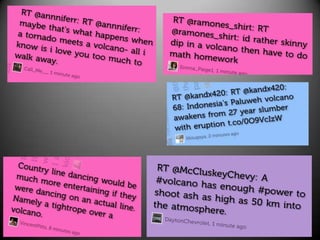Switched on presentation
- 1. Collect All Three Cards Ensure that when you swap with someone you BOTH answer the question on the card.
- 2. Switched On: Disengaged Learners, Digital Technologies and Higher Order Thinking Fiona Isaacs
- 5. Students in high-poverty schools with poorer literacy levels are more likely to use computers and the Internet for rote learning whereas their peers use them for higher order thinking activities. Warschauer, Knobel and Stone (2011)
- 6. Activities Brainstorm Prior Knowledge about Fukushima disaster Watch this YouTube video (whole thing or a segment) 1. Can I make it Infographic and Article w/ questions Explain that the students are going to make a documentary about the Fukushima disaster one year digital? on 2. Can I include Explain to students they need to create a PowerPoint presentation with images and words (no more than 10 critical thinking? words per slide!!) that convey: Why Japan used nuclear power What happened at Fukishima Some of the consequences of Fukushima one year on 3. Can I make it Use “Debut” on screen capture mode students to record social? their PowerPoint whilst talking about/ explain their slides (to create a very simple documentary). As a class watch the videos.
- 7. 1. Can I make it digital?
- 10. 2. Can I include critical thinking?
- 14. 3. Can I make it social?
- 15. “A participatory culture is a culture with relatively low barriers to artistic expression and civic engagement, strong support for creating and sharing one’s creations, and some type of informal mentorship whereby what is known by the most experienced is passed along to novices. A participatory culture is also one in which members believe their contributions matter, and feel some degree of social connection with one another (at the least they care what other people think about what they have created).” Henry Jenkins: Confronting the challenges of Participatory Culture















